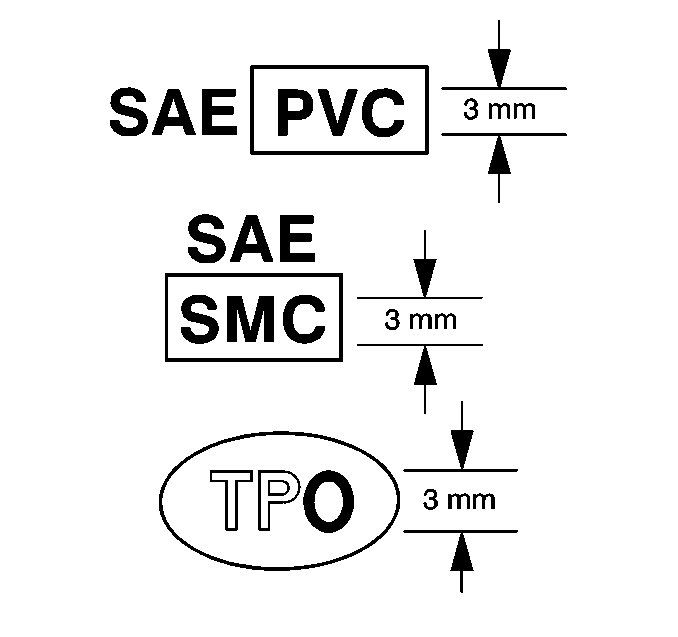
Plastic parts can be identified by the SAE code, which is usually found on the rear of the part, and/or by the characteristics of the plastic. Knowing the type of plastic aids in selecting the proper repair materials and in selecting the proper repair
procedure.
Look for the SAE code stamped into the part.
Code Found
Match the code to those in the plastic identification chart to determine whether the plastic is thermoplastic or thermoset plastic, and whether the plastic is rigid or flexible. Refer to
Plastic Identification and Refinishing Systems.
No Code Found
Warning: Do NOT use a plastic burn test to distinguish the type of plastic. The burn test produces vapors which are harmful.
Perform one or both of the following tests to determine if the part is thermoplastic polyolefin or thermoset non-polyolefin.
Float Test
- Cut a shaving of plastic from the back of the part.
The shaving should be free of mold release agents and paint.
- Place the shaving in a container of water.
| • | Thermoplastic polyolefin floats. |
| • | Thermoset non-polyolefin sinks. |
Abrasion Test
| • | Sand a spot near the damaged area with Grade 36 Roloc Disc. |
| • | Thermoplastic polyolefin material melts or frays when sanded. |
| • | Thermoset non-polyolefin material sands cleanly. |
Thermoplastic and thermoset plastics can be either rigid or flexible. Thermoplastic plastic parts are best repaired with a hot iron plastic material-feed welder, but are usually replaced. Thermoset plastic can be repaired with epoxy or other more rigid
2 package repair material.

